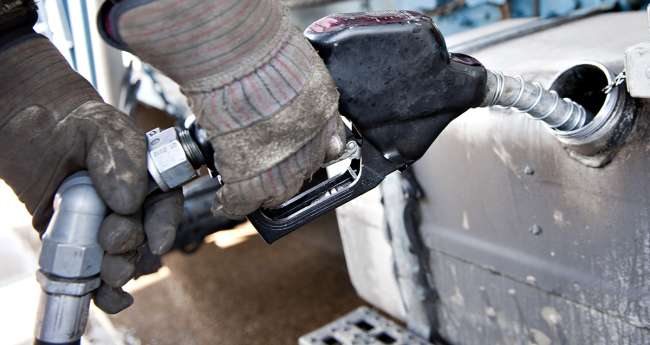Senior Reporter
Diesel Continues Upward Trend, Rises 5 Cents to $2.581

The U.S. average retail price of diesel jumped 5 cents to $2.581 while the cost of crude dipped below $50 a barrel and investors sought reassurance that oil production cuts would tighten further, experts said.
Diesel now costs 26.5 cents more than it did a year ago, when it was $2.316 a gallon, the Department of Energy said Aug. 7.
Prices for trucking’s main fuel rose in all regions.
It was diesel’s sixth consecutive increase, totaling 11.6 cents. Also, it was the largest price increase per gallon since a 6-cent jump Dec. 5.
The U.S. average price for regular gasoline rose 2.6 cents to $2.378 a gallon. The cost is 22.8 cents more than it was a year ago, DOE’s Energy Information Administration said.
Weekly gasoline prices rose in every region, EIA said.
US weekly #Gasoline retail price was up 2.6 cents to $2.38/gal, #Diesel rose 5 cents to $2.58. #EIA #RadioSpots: https://t.co/xKOGIORK0t pic.twitter.com/J8I01b0kwk — EIA (@EIAgov) August 8, 2017
“Certainly, the trend [with diesel] was pointing higher. But even with the recent, if you want to call it, spike, things have been pretty reasonable,” Denton Cinquegrana, chief oil analyst for Oil Price Information Service, told Transport Topics.
Diesel prices have been in the $2.50-per-gallon range for all but five weeks this year, when they fell into the $2.40 range.
Also, for the week ending Aug. 4, distillate fuel product supplied — primarily ultra-low-sulfur diesel used in transportation and to a lesser degree as heating oil — and an indication of demand rose to 4.34 million barrels per day, compared with 4.17 million a week earlier. It was up 13.3% from the same period last year, when it was 3.83 million barrels, according to EIA.
Increasingly, the demand for distillate fuel will be borne by transportation, EIA said, as industrial and home use of heating oil falls off, replaced by natural gas.
At the same time, exports of U.S. distillate grew to 1.2 million barrels a day in 2016, then set a monthly record high of 1.5 million barrels a day in May, EIA said Aug. 3.
“Quite honestly, if we weren’t exporting the amount of diesel we were, I don’t necessarily think those supplies would end up in U.S. storage tanks,” Cinquegrana said. “I think it would be more of a fact the distillate refining margin would be hammered so hard you would see refiners cutting back [distillate production].”
Meanwhile, West Texas Intermediate crude futures on the New York Mercantile Exchange closed at $49.31 per barrel Aug. 7 compared with $50.17 on July 31.
Also, U.S. inventories of crude oil, distillate fuel and gasoline are in the upper half of the average range for this time of year, EIA said.
OPEC wants to see U.S. crude oil inventories versus the five-year average come down — signaling the market is coming into balance . But based on the latest EIA numbers, crude oil supplies still are 70 million barrels above that five-year average. That is down from 122 million barrels above the average in mid-March, Cinquegrana said.
“But I think you could still call that a glut of crude oil,” he added.
Also, distillate inventories are about 15 million barrels above the five-year average, he said. “That has been sliced in half from 30 [million] or 31 million coming out of the winter.”
Meanwhile, prices fell as investors sought reassurance that the world’s largest oil producing countries are complying with their supply-cut deal, according to Bloomberg News.
“The OPEC concerns are certainly going to keep crude from breaking out,” Bart Melek, head of global commodity strategy at TD Securities in Toronto, told Bloomberg News. “Before we see a significant takeoff, we are going to have to see commitment from OPEC that they are in it for as long as is required. They are going to have to come out and make those statements.”
Bloomberg said worldwide drilling reached its highest in almost two years in July, according to Baker Hughes Inc., a Houston-based oil field services company.
There are only about “five more weeks of draws and then inventories start to rise again. You’re coming rapidly to the end of the draw season for crude,” Bill O’Grady, chief market strategist at Confluence Investment Management in St. Louis, told Bloomberg.
At the same time, the weekly U.S. rig count fell to 954 during the week of Aug. 4, four rigs fewer than the week before and 490 more than a year earlier, Baker Hughes reported.
Baker Hughes ranks No. 15 on the Transport Topics Top 100 list of the largest private carriers in North America.




